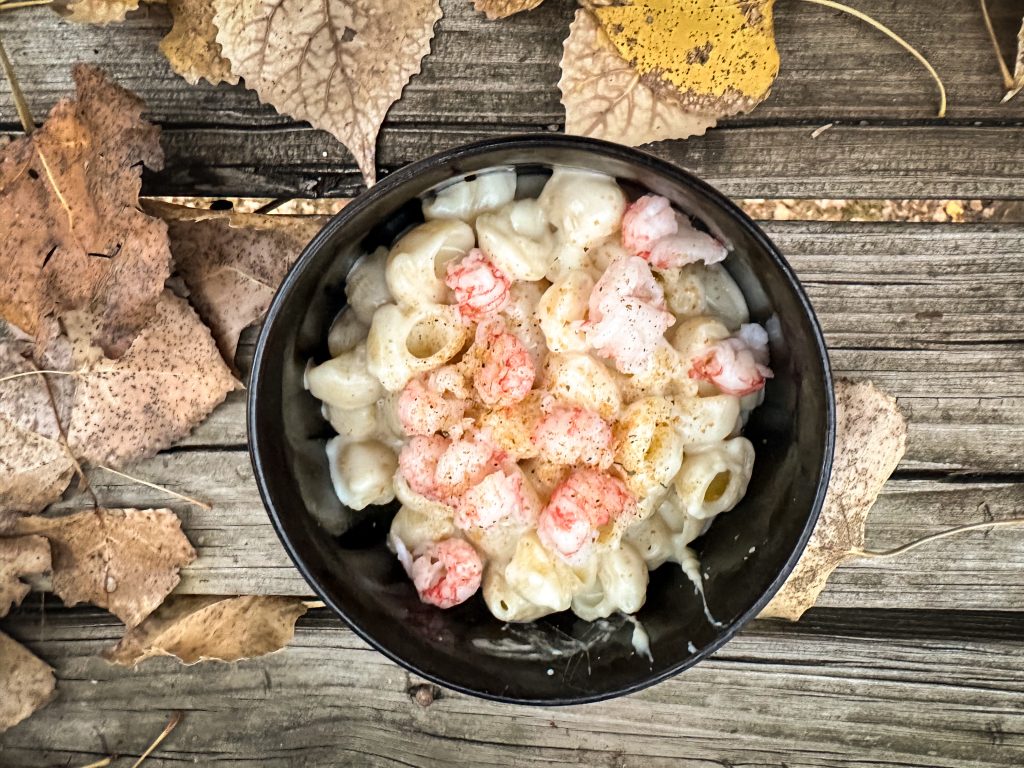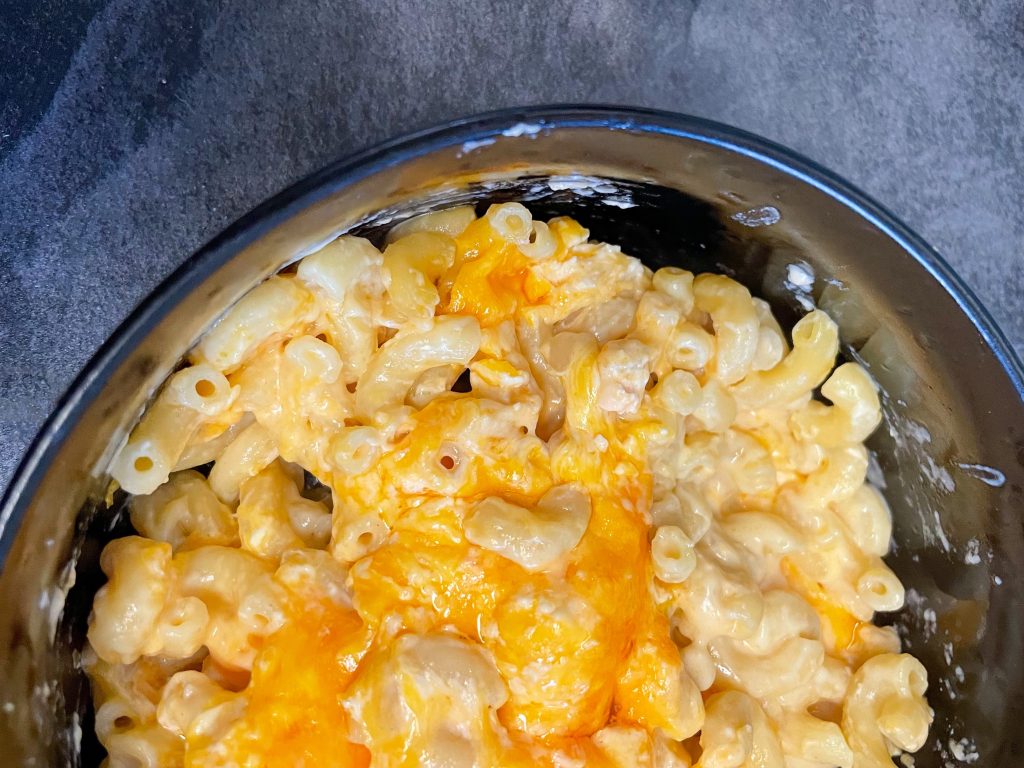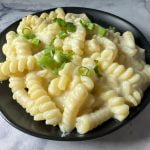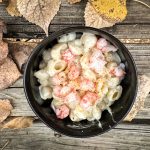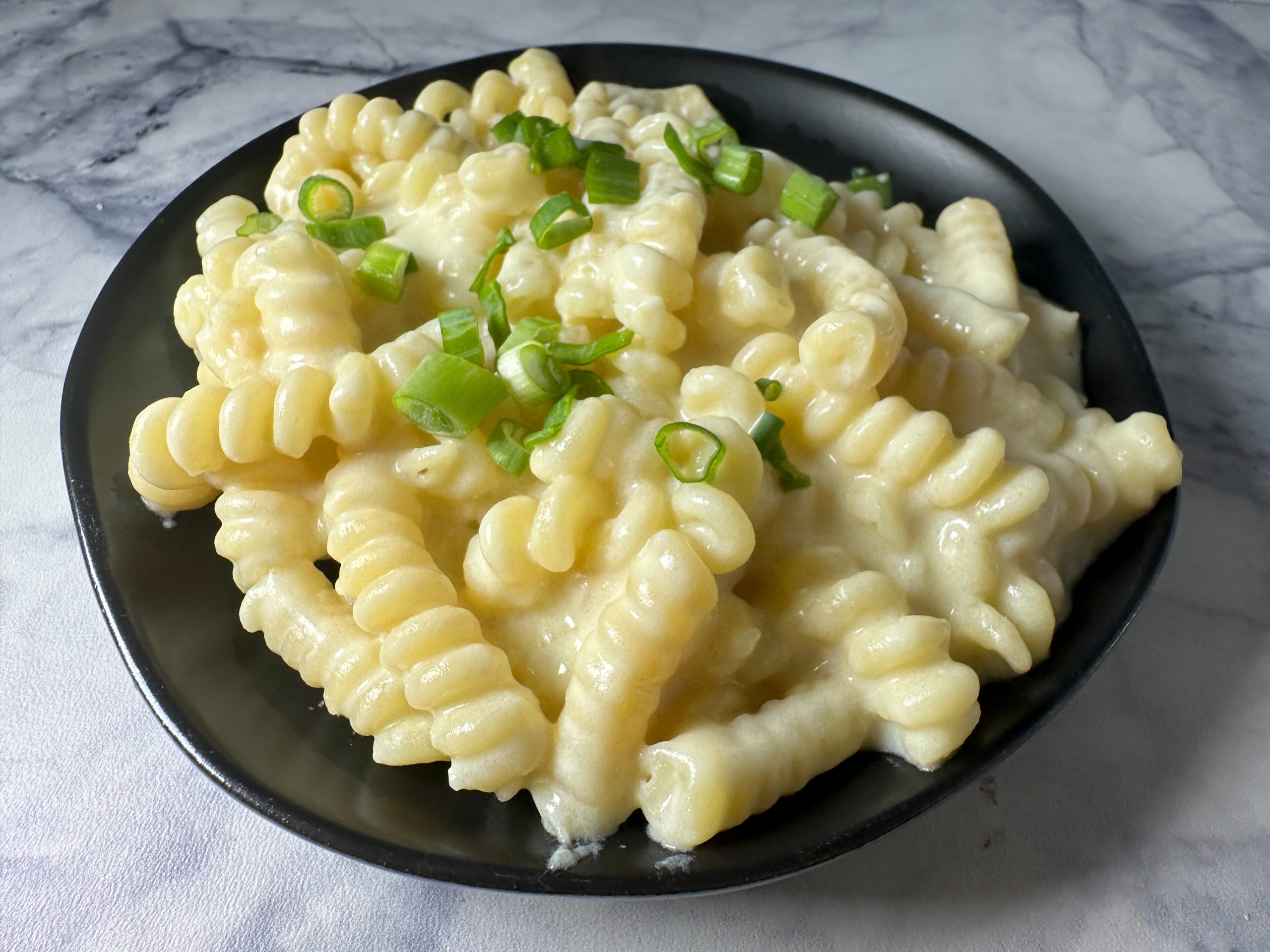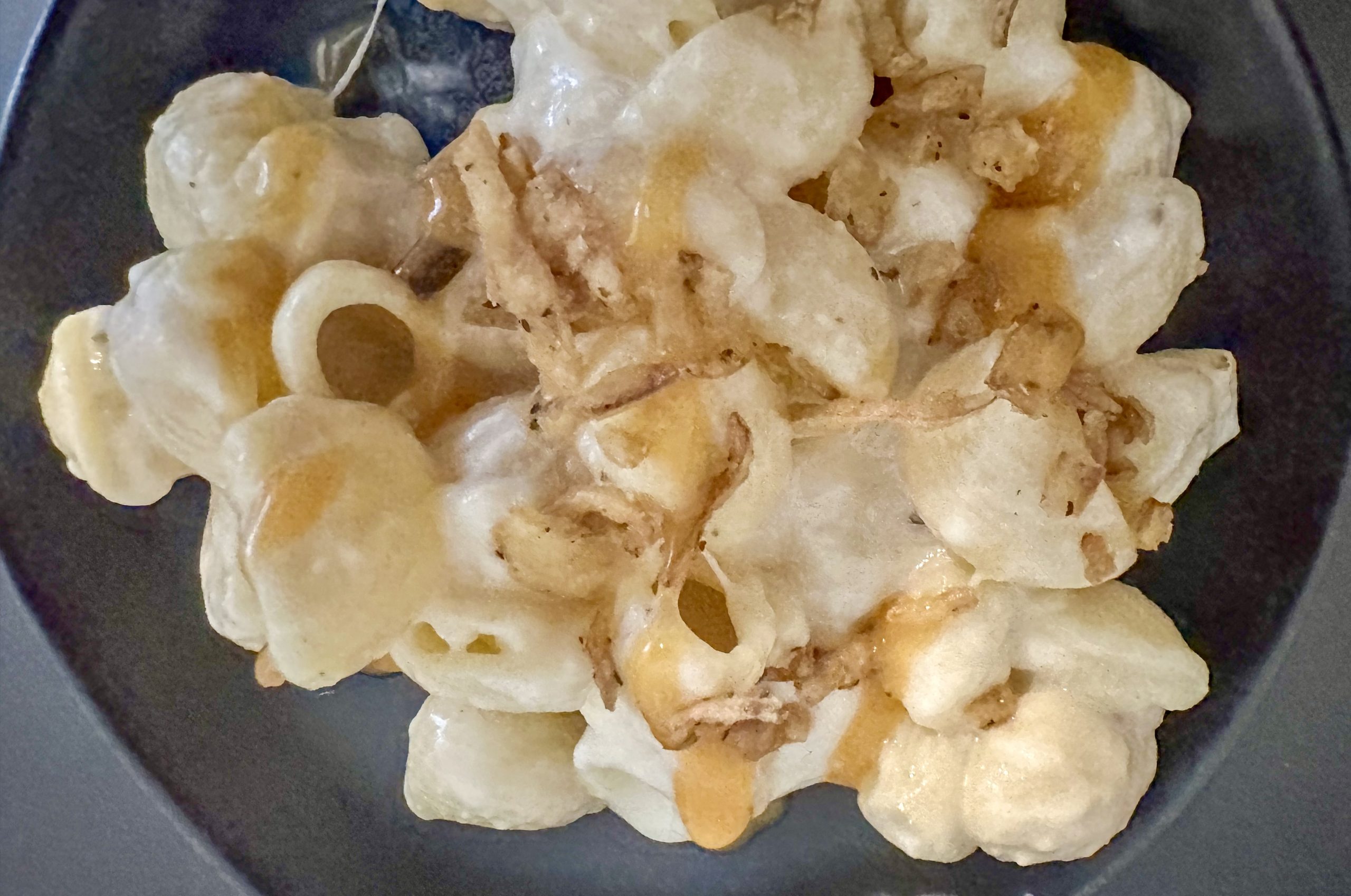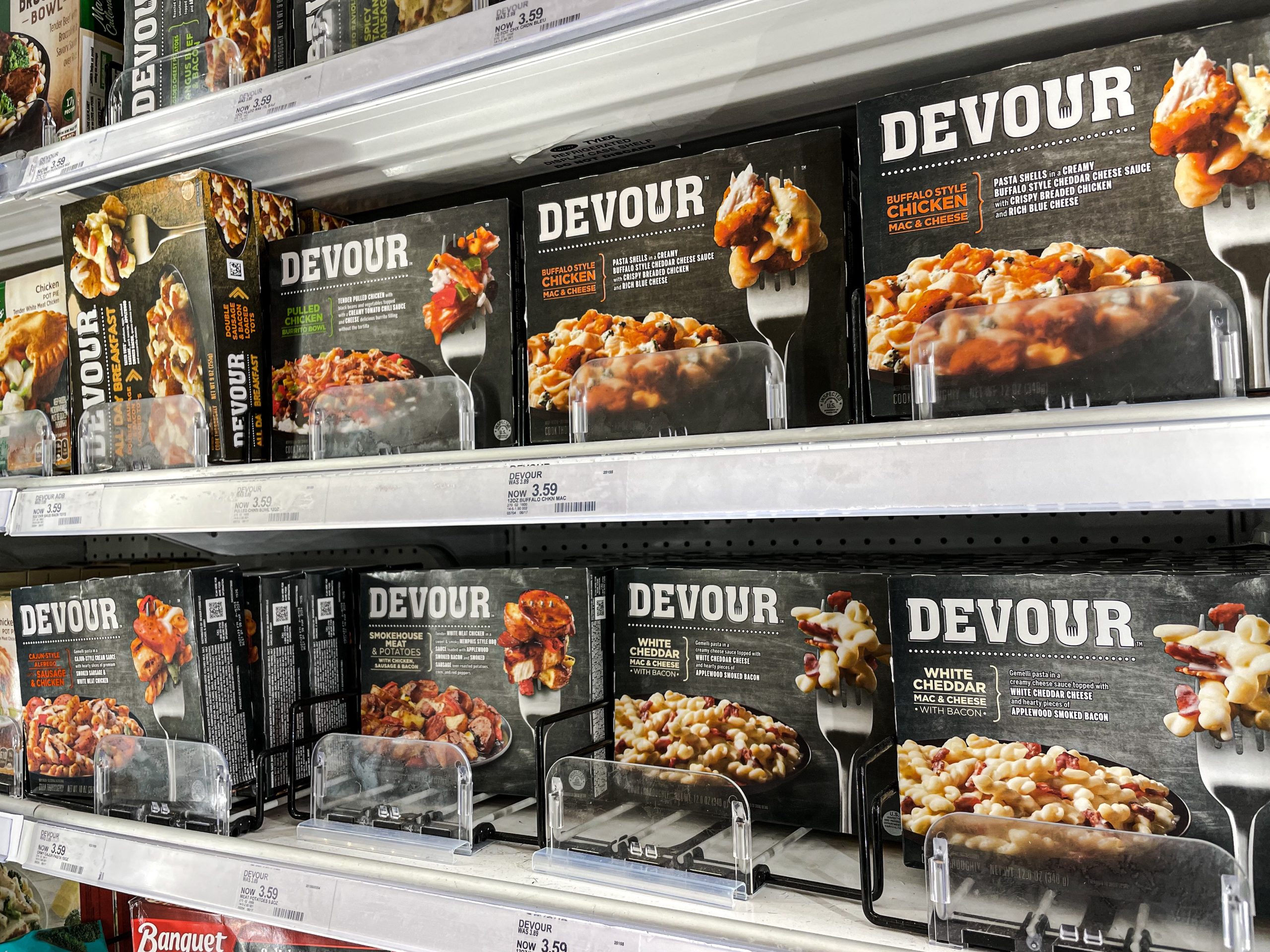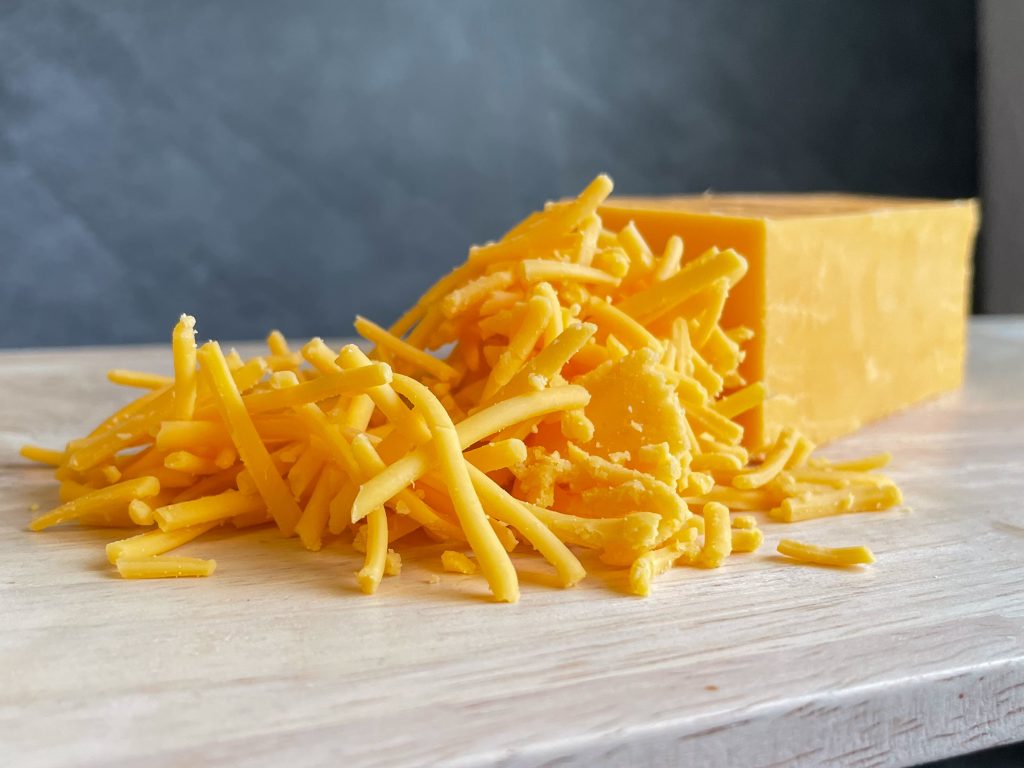
If I were stranded on an island with only one cheese for the rest of my life, I would hands down choose cheddar cheese. It’s a versatile cheese that pairs beautifully with most cheeses. When using it in a mac and cheese, it melts well and has a flavor that shines through beautifully without overwhelming the other ingredients in the dish. It’s the cheese you picture when I ask you to imagine a piece of cheese and is one of the easiest cheeses to get your hands on.
What is cheddar cheese?
Cheddar is one of the oldest recorded cheeses, dating back to the 12th century. Originating in the village of Cheddar in Somerset, England, it is a hard cheese that ranges from white to orange in color.
The flavor and texture of cheddar cheese is influenced by its age. Younger cheddar is buttery and creamy with a smooth texture and mild flavor. As it ages, the cheese will develop stronger flavors and become more crumbly. Sharp cheddars are notably more complex than mild cheddars, but both have their roles within mac and cheese recipes.
Cheddar is universally beloved. This cheese makes up 50% of global cheese consumption, with a featured position in sandwiches, mac and cheeses, and charcuterie boards.
What is the difference between orange and white cheddar?
The main difference between orange and yellow cheddar is purely visual. Orange cheddar contains a natural food dye, while white cheddar does not. Cheddar cheese is naturally yellow or white but to achieve that classic orange color cheese producers follow a centuries old tradition. In 17th century England when this cheese hit the market, there was a lot of variety in its color based on the qualities of milk they used in the cheese making process. In order to combat that and have a uniform color, they began to add a naturally occurring dye.
Annatto is a flavorless dye that is derived from the seed of the achiote tree. This slightly sweet nutty additive is used in foods today that span the grocery store. It serves a role in baked goods, dairy products, meats, and even breakfast cereals.
Interestingly, in the United States preferences on cheddar color varies by region. Orange cheddar is generally more desired in the Midwest and Northeast parts of the country while other areas reach for the white version.
Some consumers view white cheddar as more natural or artisanal, but unless your cheese has a significant amounts of annatto, it will not affect the flavor at all. White cheddar is more of a buzzword than a major designation. When used in mac and cheese, the color difference becomes even less noticeable as the annatto becomes further diluted in the sauce. This gives home cooks an opportunity to experiment and see if they can detect the subtle differences in their dishes.
What are the different ages of cheddar?
Aging is an important step in the cheese making process. Fresh cheese curds are decidedly lacking in flavor. It takes the aging process to develop the compounds that make cheese taste like cheese.
One important thing to note is that these age ranges are a guideline, but not a requirement. Cheese flavor and texture can vary wildly from batch to batch, and it’s best to taste your cheddar purchase before cooking with it.
There are five ages of cheddar cheese.
Mild Cheddar (aged 1-3 months)
Flavor
Mild cheddar is mild, slightly buttery, and has a subtle tanginess. You will want to avoid pairing this with strong flavored ingredients or it will completely fade into the background. This is a great choice if you want to serve this mac and cheese as a side or in a dish with mild ingredients that you want to showcase.
Texture
The texture of mild cheddar is smooth and creamy. It’s perfect for melting into grilled cheese or a cheese sauce. It helps keep a smooth, creamy texture in your mac and cheese.
Culinary Uses
Mild cheddar is great for
- Grilled cheese sandwiches
- Mac and cheese base
- Quesadillas
- Cheese sauces
Mild Cheddar Examples
Note: This article contains affiliate links to products that I love and use to make mac and cheese in my own kitchen. When you click links here and make a purchase from retailers like Instacart or Amazon, I receive a commission at no additional cost to you. For more information, see my Affiliate Link Policy.
Kraft Mild Cheddar: Buy on Instacart
Organic Valley Mild Cheddar: Buy on Amazon
Happy Valley Mild Cheddar: Buy from Aldi on Instacart
Medium or Semi-Sharp Cheddar (aged 3-6 months)
Flavor
Medium cheddar has a slightly stronger flavor in comparison to its mild counterpart. It is starting to develop more complex flavors, but still has many of the creamy buttery qualities that you see in mild cheddar.
Texture
As cheddar starts to age, it will become less creamy and more firm. Medium cheddar is still smooth and pliable, but firmer than mild. These qualities make it a great choice for both snacking and cooking.
Culinary Uses
Medium cheddar is ideal for:
- Sandwiches and burgers
- Mac and cheese
- Charcuterie boards
- Toppings for salads or soups
Medium Cheddar Examples
Note: This article contains affiliate links to products that I love and use to make mac and cheese in my own kitchen. When you click links here and make a purchase from retailers like Instacart or Amazon, I receive a commission at no additional cost to you. For more information, see my Affiliate Link Policy.
Tillamook Medium Cheddar: Buy on Amazon
Kroger Medium Cheddar: Buy from Kroger on Instacart
Target Medium Cheddar: Buy from Target on Instacart
Sharp or Mature (aged 6-12 months)
Flavor
Sharp cheddar is tangy and noticeably sharp. It’s developing compounds that give it a distinct flavor and its sharpness helps it stand out against stronger flavors. It can hold up against stronger flavors and is a versatile ingredient for adding depth to a variety of dishes.
Texture
Sharp cheddar is firmer than younger cheddars and starts to take on a crumbly texture. It still melts beautifully.
Culinary Uses
Sharp cheddar is fantastic for:
- Mac and cheese
- Cheese boards
- Grilled cheese when paired with another better melting cheese
Sharp Cheddar Examples
Note: This article contains affiliate links to products that I love and use to make mac and cheese in my own kitchen. When you click links here and make a purchase from retailers like Instacart or Amazon, I receive a commission at no additional cost to you. For more information, see my Affiliate Link Policy.
New York State White Cheddar: Buy from Murray’s Cheese
Tillamook Sharp Cheddar: Buy on Amazon
Extra Sharp or Vintage Cheddar(aged 12-24 months)
Flavor
Extra sharp cheddar is one of my favorite cheeses to use in a mac and cheese. It’s packed with flavor, with a very sharp and complex profile. When diluted into a cheese sauce, it holds it own against other ingredients.
Texture
The texture of this cheese is crumbly and slightly granular. It doesn’t melt as smoothly as milder cheddar, but offers incredible flavor when used in cooking. I’ve noticed that extra sharp cheddars will crumble with a little pressure, so you don’t have to worry about using a grater to get it into small pieces.
Culinary Uses
Extra sharp cheddar is great for:
- Cheese boards
- Grating over finished dishes
- Mac and cheese
Extra Sharp Cheddar Examples
Note: This article contains affiliate links to products that I love and use to make mac and cheese in my own kitchen. When you click links here and make a purchase from retailers like Instacart or Amazon, I receive a commission at no additional cost to you. For more information, see my Affiliate Link Policy.
Sartori Montamore Cheddar: Buy from Aldi using Instacart
Cabot Seriously Sharp Cheddar: Buy from Aldi on Instacart
Tillamook Extra Sharp Cheddar: Buy on Amazon
Honorable mention: Extra-Aged Cheddar (24+ months)
No cheddar guide would be complete without mentioning extra-aged cheddar. I wouldn’t recommend using it in a mac and cheese. These cheeses have strong flavors that can sometimes overwhelm a dish. Additionally, it doesn’t melt as well, so coaxing it into a cheese sauce is a difficult undertaking.
Mac and Cheese Pairing Guide
When you take a bite of cheese, pay attention to where the flavor hits you. Sometimes the flavor takes a few seconds to build. These are what I call “closer cheeses”. Other cheeses immediately open up with flavor. These are “opener cheeses”. Well rounded mac and cheese dishes make use of both opener and closer cheeses. I talk more about my mac and cheese theory at How to Use Cheese in Mac and Cheese.
Most cheddars are opener cheeses. However, pay attention to the age of your cheese. Somewhere between Sharp and Vintage your cheese will cross into the closer side. You’re relatively safe assuming your cheese is an opener and planning your closer cheeses accordingly, but always taste your cheese before committing to a pairing to ensure your dish will be presentable.
Where to Buy Cheddar
Note: This article contains affiliate links to products that I love and use to make mac and cheese in my own kitchen. When you click links here and make a purchase from retailers like Instacart or Amazon, I receive a commission at no additional cost to you. For more information, see my Affiliate Link Policy.

